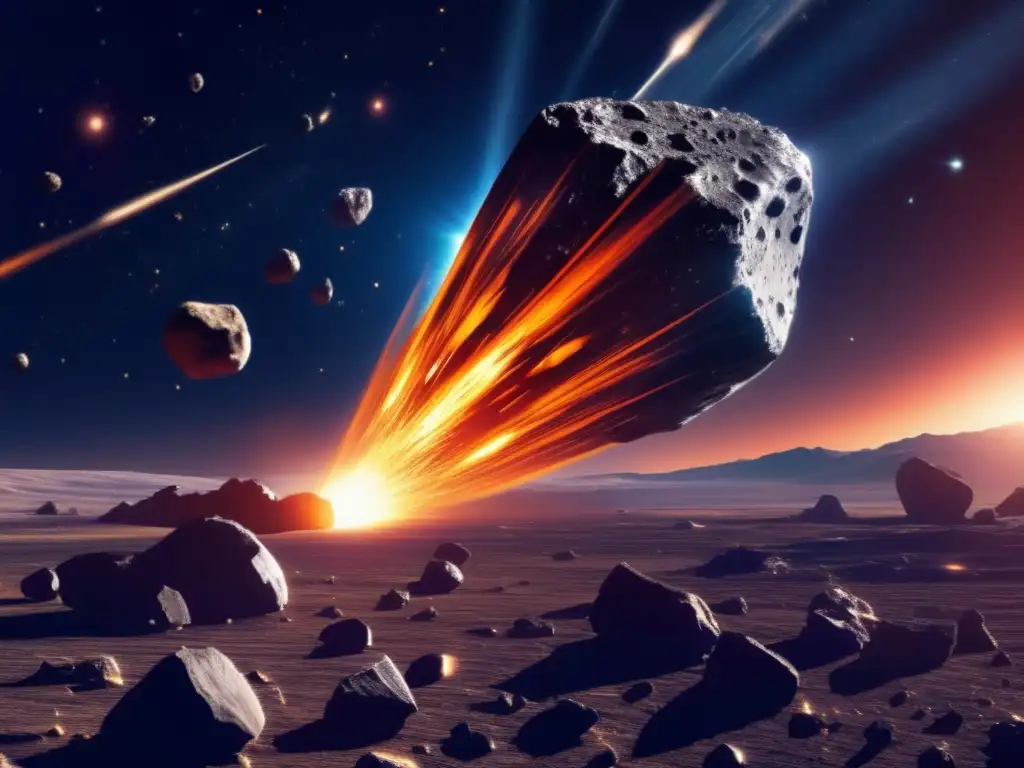Biblical References To Asteroids: A Scholarly Perspective

Introduction
The Bible has been a cornerstone of religious study and one of the most influential works in human history. It contains many fascinating accounts and descriptions of celestial objects, including asteroids. The study of asteroids from a biblical perspective can provide insight into their cultural and religious significance throughout history. This article will explore biblical references to asteroids from a scholarly perspective.
The Role of Asteroids in the Bible

The Book of Revelation
The book of Revelation, the last book of the New Testament, is a prophetic account of the end of the world. In chapter 8, verse 10, it describes a great star falling from the sky, which is called Wormwood, that causes the waters to become bitter and many people to die. Many scholars believe that this star is a reference to an asteroid. Wormwood could refer to the bitterness and death that would follow if such an asteroid were to strike the Earth.
The Book of Exodus
The Bible also makes reference to a plague of hailstones with fire that struck Egypt in the book of Exodus. In chapter 9, verse 24, it says, "So there was hail, and fire flashing continually in the midst of the hail, very heavy hail, such as had never been in all the land of Egypt since it became a nation." Some scholars have suggested that this could be a description of an asteroid impact.
Astronomy in the Ancient World

Ancient Babylon
In ancient Babylonian mythology, the goddess Ishtar was associated with the planet Venus and Tiamat, a primordial goddess of chaos, was associated with a celestial object that collided with the Earth, creating the heavens and the Earth. This collision may have been a reference to an asteroid impact.
Ancient Greece
The Greeks also had their own mythology that included references to celestial objects. The god Apollo was associated with the Sun, while the goddess Athena was associated with the planet Venus. The Greeks also believed that comets were signs of impending doom, and that they could signal the end of the world. Many comets are believed to be remnants of ancient asteroids.
The Scientific Study of Asteroids

Exploration and Discovery
Since the beginning of the Space Age, humanity has turned its attention to the exploration and discovery of asteroids. In 1993, the Hubble Space Telescope captured images of an asteroid known as Mathilde. This was the first time that astronomers had ever taken a photograph of an asteroid up close. Mathilde is believed to be one of the oldest and most heavily cratered objects in the Solar System.
Importance to Understanding the Solar System
Asteroids play a crucial role in our understanding of the Solar System. They are believed to be remnants of the earliest days of our Solar System, and they contain information about the formation and evolution of our solar system. Studying asteroids can provide insight into the building blocks of the planets and the conditions that existed during their formation.
Frequently Asked Questions

-
Does the Bible mention asteroids?
The Bible does not specifically mention asteroids, but it contains descriptions of celestial objects that could refer to them.
-
What significance do asteroids have in biblical studies?
Asteroids can provide insight into the cultural and religious significance of celestial objects in history.
-
What role do asteroids play in our understanding of the Solar System?
Asteroids can provide clues about the formation and evolution of our Solar System.
-
How are asteroids studied today?
Astronomers study asteroids using telescopes and space probes. They also analyze meteorites, which are fragments of asteroids that have fallen to Earth.
-
Are asteroids a threat to Earth?
Some asteroids can pose a potential threat to Earth if they collide with our planet. Scientists are working to develop methods to detect and deflect potentially dangerous asteroids.
Conclusion
Biblical references to asteroids can provide insight into the cultural and religious significance of these celestial objects throughout history. By studying asteroids from a scientific and biblical perspective, we can gain a better understanding of our place in the universe. If you have any thoughts or comments on this topic, please share them in the comments section below. Thank you for reading this article on Asteroid Realm.
Additional Resources

 Cosmic Cataclysms: Asteroids In Inuit Legends
Cosmic Cataclysms: Asteroids In Inuit Legends The Mythical Significance Of Asteroids In Indian Texts
The Mythical Significance Of Asteroids In Indian Texts Exploring Asteroids In Chinese Folklore
Exploring Asteroids In Chinese FolkloreIf you want to discover more articles similar to Biblical References To Asteroids: A Scholarly Perspective, you can visit the Asteroid Mythology category.
Leave a Reply

Articulos relacionados: